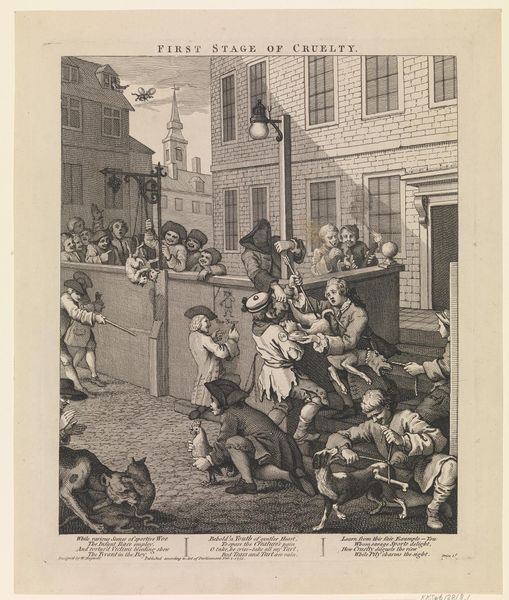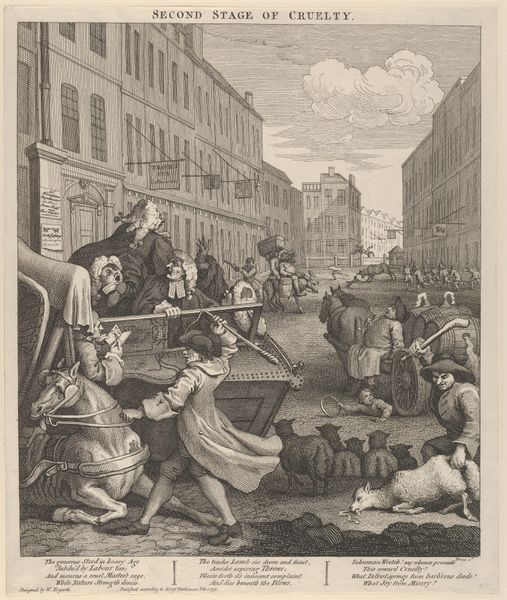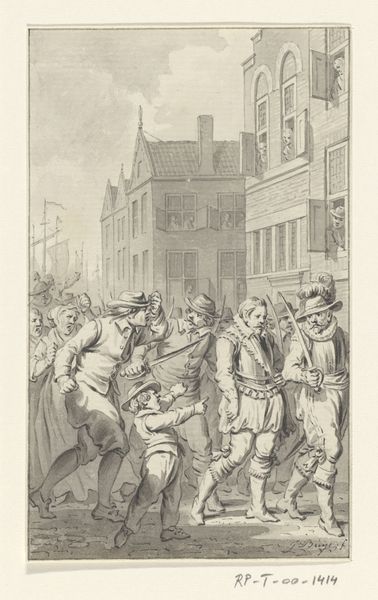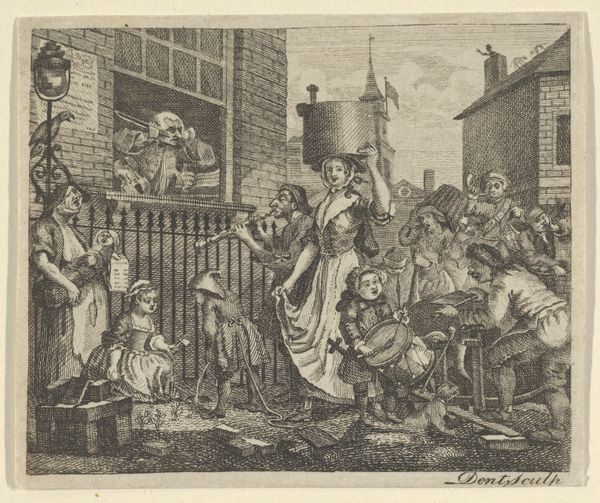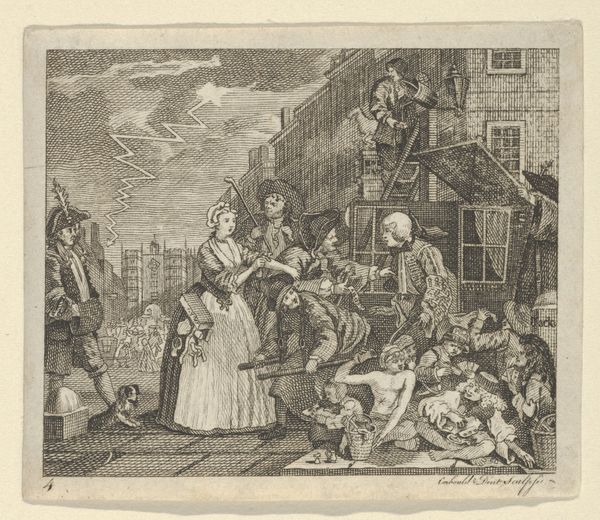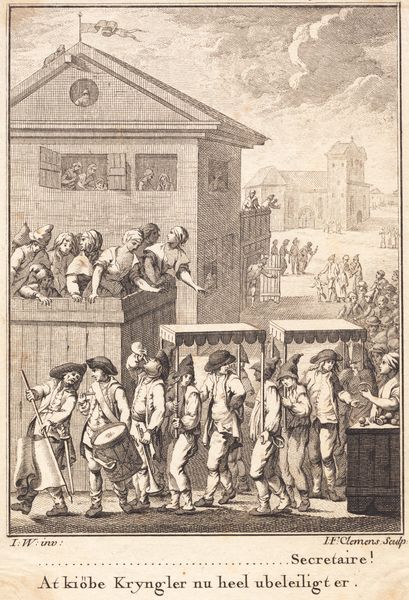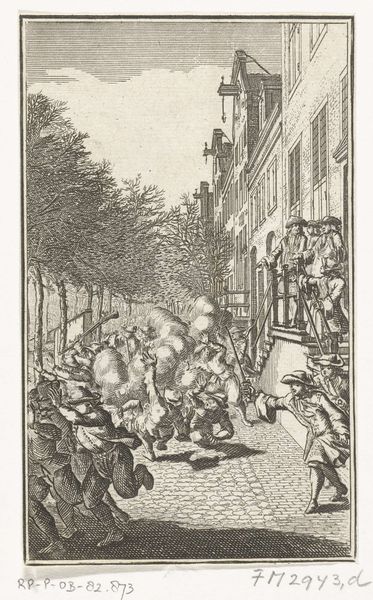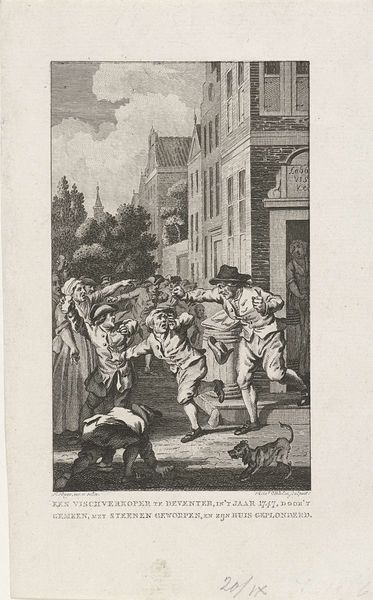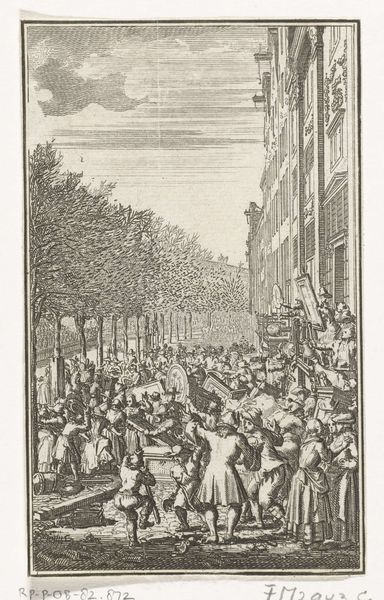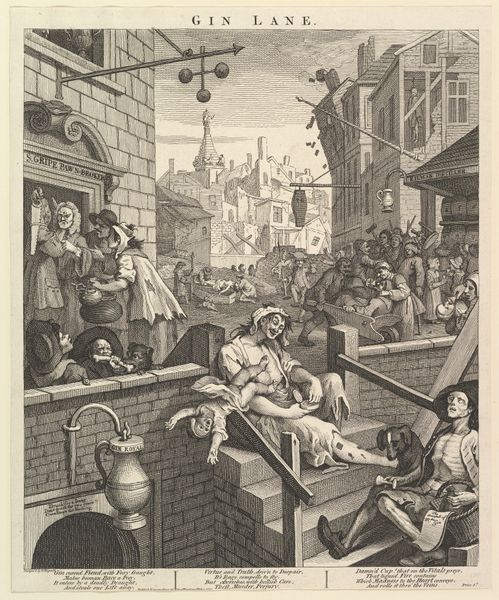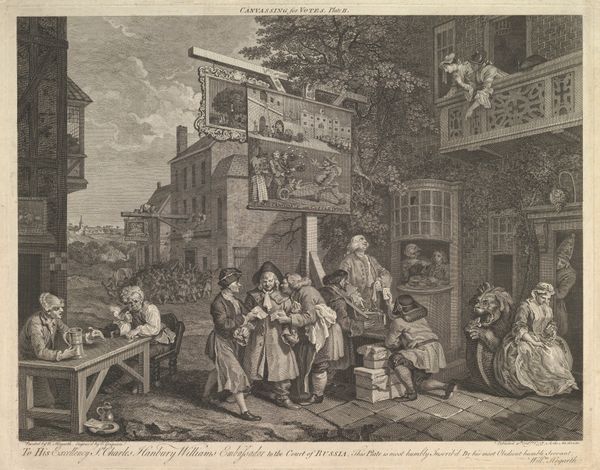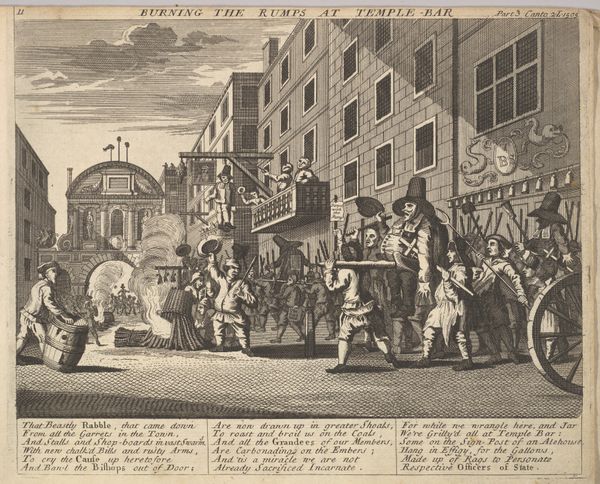
drawing, print, etching, engraving
#
drawing
#
narrative-art
#
animal
# print
#
etching
#
caricature
#
dog
#
landscape
#
figuration
#
romanticism
#
men
#
pen work
#
genre-painting
#
engraving
Dimensions: Sheet: 3 1/16 x 2 11/16 in. (7.7 x 6.8 cm)
Copyright: Public Domain
Curator: This print, titled "The First Stage of Cruelty," created between 1795 and 1805, presents a stark scene rendered through etching and engraving. Made by an anonymous printmaker in that time period, how can we examine its materiality? Editor: The density of lines achieved through etching and engraving makes me wonder about the labour involved. It seems incredibly detailed, yet also… brutal. What strikes you most about the means of its production? Curator: The very act of reproducing this image as a print connects it to the world of mass media and dissemination. We should be interested in the labour that created this reproducible image, but more importantly who consumed it and why. What does it tell us about the material conditions of both artist and audience? Consider how the scene's harshness might have played out against a backdrop of burgeoning consumerism. What purpose did this art serve at that moment? Editor: It's a very stark image showing cruelty to animals, with many perpetrators gleefully participating. What’s your take on it beyond the brutal imagery and artistic methods? Curator: I see a scathing commentary on social morals through the lens of animal abuse. Think of the availability of paper and ink, the network for distribution – these factors informed how the message was received. What did this engraving mean in the context of a society grappling with social hierarchy and moral decay? Are animals mere commodities here? Editor: So, the engraving technique itself facilitates a wider distribution, bringing awareness - or perhaps even normalising this cruelty- within reach of many consumers. It makes me wonder if this imagery played any role in reinforcing societal behaviors or triggering empathy among its viewers... Thanks, I hadn’t really thought of the broader reach that the materials enabled! Curator: Indeed. Consider also the waste and the cost that might be part of such processes. Hopefully that helps!
Comments
No comments
Be the first to comment and join the conversation on the ultimate creative platform.
